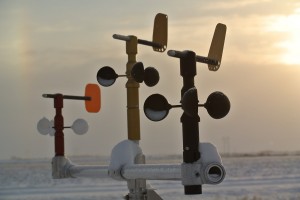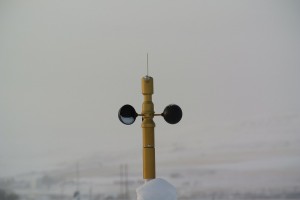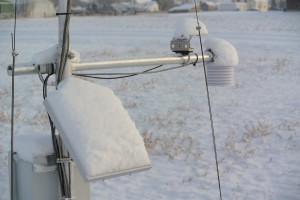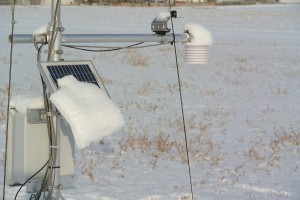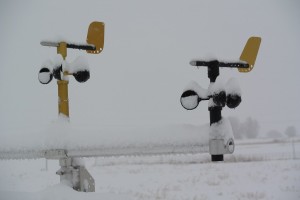With all the time and care we put into their existence, each of our products quickly becomes our “baby.” It’s hard to abuse something so near and dear, but for product designers like me, this type of testing is necessary. We did a couple of rounds of wind tunnel testing on a WSD-1 (the Dyacon wind sensor) using an ELD wind tunnel with an 18″ square test chamber. We tested the sensor up to 60 m/s (134 mph, 215 kph).
Tests were structured around ISO 17713‑1. The tests conducted were:
– Starting threshold
– Transfer function
– Distance constant
– Off-axis response ratio
The ISO 17713‑1 tests were adapted to meet the digital output characteristics of WSD‑1. Additional testing at an independent lab is planned.
The following are some images from the effort:

Wind sensor in wind tunnel test section
A computer is used to capture the raw RS‑485 data during testing. These data will then be used by the firmware to calculate wind speed and direction for the Modbus data frame.
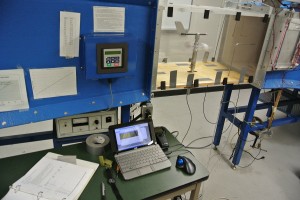
Computer used to capture RS485 data.
The test section floor and sensor mount allow the sensor to be tilted at 5 degree increments to a maximum incline of 30 degrees forward and back.
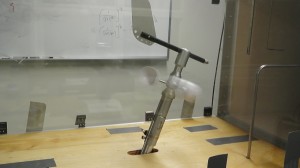
Off-axis response test
How do you abuse a sensitive wind sensor? Mount it to your truck. Rain, snow, dust, salt spray, vibration, gusts, tree branches, and overhead structures have all been encountered. The sensor pictured has racked up more than 5,000 highway miles at road speeds up to 80 mph (128 kph). A sensor like this on your truck is enough to make you the envy of every geek on the road.

Truck with wind sensor mounted.
Drive safe.
Eugene

